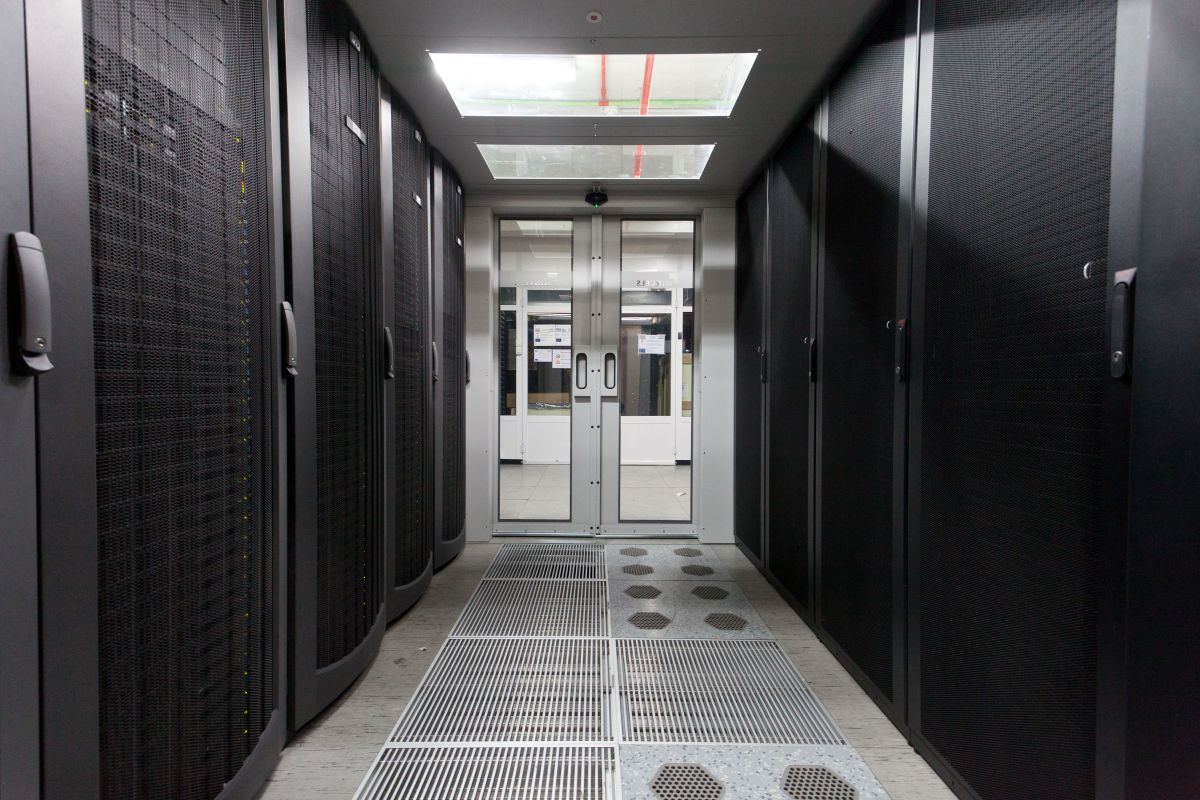NISRT: Applying the Principles of Green IT

Research Infrastructure at the National Documentation Centre of Greece (EKT) effectively implements Green IT technologies according to the international standards and regulations with an aim to minimize the environmental effects of computing.The Green approach to computing addresses a broad range of environmental issues by demanding a set of optimal management activities, cost benefit –related processes and technologies such as virtualization, Recycling and Telecommuting.
The principles of Green IT have been a focal point for the implementation of the National Information System for Research and Technology (NISRT), the national research infrastructure that EKT maintains and develops. Better energy efficiency for IT operations, power management without sacrificing performance, increased productivity and efficiency, cut in costs and higher ROI (Return on Investment), ease of deployment of systems are only some of the benefits that Green IT initiatives have to offer.
The National Documentation Center of Greece (EKT) has an advanced Datacenter which applies the main features of Green IT and follows the best practices in the field: regulations, monitoring processes introduced by the Green Grid, Cloud technologies, and virtualization techniques. The Center’s actions aim at improving the energy efficiency of the Datacenter, comply with EU code of Conduct for Data Center and serve European targets on improving energy effectiveness (according to EU Europe 2020 Digital Agenda Strategy).
Since 2007, the National Documentation Center (EKT) takes actions for improving energy efficiency and reduce the environmental effects of its datacenters and digital infrastructure. It is estimated that, since 2008, the consumption has been reduced by at least 387.940 Kwh, resulting in 387 fewer tonnes of CO2 emissions in the atmosphere. An integrated system for monitoring and measuring the energy consumption operates at the Datacentre (where HellasGrid Athena systems and GRIX/GEANT nodes are also hosted).
In the frame of NISRT, we installed the system "Cold Isle Containment", which provides special energy efficiency since it effectively traps the cool air exactly where it is needed. Also we used Computational Fluid Dynamics, (CFD) – a branch of fluid mechanics that uses numerical methods and algorithms to solve and analyze problems-. Those actions have significantly reduced the Datacenter's Power Usage Effectiveness (PUE). At a second level, we developed software for measuring and monitoring, recording and reporting a set of environmental metrics in real time (Power Usage Effectiveness). Environmental metrics were integrated into its overall IT dashboard and disseminated to the public through various modes. The system's new version provides graphic representations of the energy and power rates measured (EKT/Virtual Infrastructure GReen meteR).
The goal of Green IT (or Green Computing) is to increase environmental sustainability reducing energy use and pollution footprint throughout the entire ICT lifecycle, from initial manufacture, through delivery, use, maintenance, recycling and disposal in an economically realistic way. Adopting and implementing Green ICT principles and practices can help industries become more energy-efficient and contribute to reducing the country's energy dependence.
In view of a need for better and more efficient use of public funds in the context of the global economic downturn, at the European level, there is an increasing pressure on publicly funded e-Infrastructures to adopt more sustainable approaches to ICT use. In the context of Europe’s ‘Green Agenda’, there are myriad of initiatives, interventions and projects taking place at both national and institutional level. In this area, the challenge remains to manage energy consumption at the service level, optimize resources and cause a net reduction in energy use. The Digital Agenda for Europe 2020 recognizes the significant role of Green IT in the global effort for cutting down global levels of energy consumption and invites the IT sector to build a common digital market based on interoperability standards and a common political and regulatory framework which pursues Europe’s 2020 targets for energy and climate change.
The Center currently undertakes activities in the field of Cloud Computing according to the Software as a service (SaaS) delivery model. Digital services are designed to address the Greek Community of Libraries, Archives, Museum and the country's cultural, research and educational institutions.
The implementation of Green IT in the field of SaaS applications is of major significance for the environment, the economic viability and the effectiveness of the services provided. EKT will continue to provide advanced digital services and develop software solutions which adopt the principles of Green IT and run according to international Green standards, in a way that drives measurable financial and environmental benefits
|
|
|

Digital applications developed with “Software as a Service” model
EKT has developed Cloud Computing Services, through its ‘Software as a Service’ model, specializing in the storage, organisation and provision of open documented digital content. The SaaS model introduces economies of scale and ensures sustainability as well as constant compliance with standards and interoperability developments. Based on the virtualization technological infrastructures, pilot repositories and digital libraries are already available.








